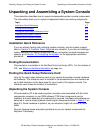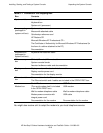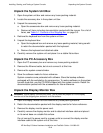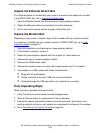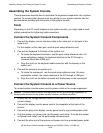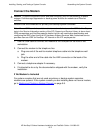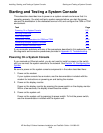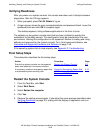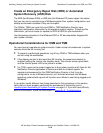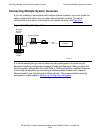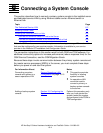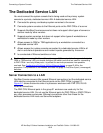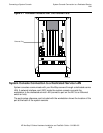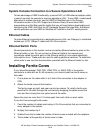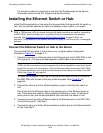
Installing, Starting, and Testing a System Console
HP NonStop S-Series Hardware Installation and FastPath Guide—541880-001
5-10
Operational Considerations for OSM and TSM
Create an Emergency Repair Disk (ERD) or Automated
System Recovery (ASR) Disk
The ERD (for Windows 2000) or ASR disk (for Windows XP) saves repair information
that you can use to reconstruct your Windows system files, system configuration, and
startup environment variables if they are corrupted.
The OSM or TSM Low-Level Link and OSM or TSM Notification Director save
important configuration information to the operating system registry. To back up this
information, you must create (or update) an ERD or ASR for your workstation.
Use the backup procedure in the Windows 2000 or XP documentation shipped with
your system console.
Operational Considerations for OSM and TSM
You now have an operational system console. Under normal circumstances, a system
console should be left running, but:
•
To prevent unauthorized operations, log off any OSM or TSM software when you
are not using the workstation.
•
If the display monitor is idle more than 20 minutes, the power save feature is
enabled, putting the monitor into standby mode. The monitor screen goes blank,
and the monitor power LED turns yellow or amber.
•
For TSM, a user has to remain logged on to the system console at all times for the
Notification Director application to receive and dial out incident reports. An
important enhancement for the OSM Notification Director is that it can be
configured to run as a Windows service, so it will start whenever the Windows
operating system starts up and will function even without a user being logged on to
Windows.
If you obtain results different from those described in the procedures in this section,
verify that you have properly performed the procedures in this section and in
Unpacking and Assembling a System Console on page 5-2. If you still have difficulty
after this verification, follow the instructions in Appendix D, Troubleshooting.



